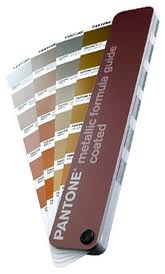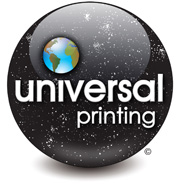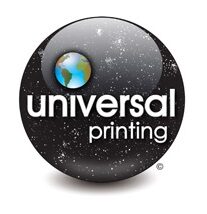Choosing Inks for Color Printing – Metallics and other Specialty Inks
So far our previous blog posts have talked about Spot Colors, Process Colors, and how the difference between coated and uncoated paper impacts the color and appearance of the ink. Sometimes you might want to get a little more POP from your printed pieces. For some people, metallic ink has great appeal.
 Originally, Pantone offered 7 metallic inks. PANTONE 871 through PANTONE 876 are a range of hues moving from gold to copper, with PANTONE 877 being silver. Commercial Offset Printers, like us, would occasionally mix these metallic with colored inks to create metallic tints. By the late 1990’s, Pantone issued their first office Formula guide of tinted metallics and currently they offer 300 variations of tinted metallic formulations.
Originally, Pantone offered 7 metallic inks. PANTONE 871 through PANTONE 876 are a range of hues moving from gold to copper, with PANTONE 877 being silver. Commercial Offset Printers, like us, would occasionally mix these metallic with colored inks to create metallic tints. By the late 1990’s, Pantone issued their first office Formula guide of tinted metallics and currently they offer 300 variations of tinted metallic formulations.
There are a few things to consider if you are working with metallic ink. First of all, unlike process and spot colors, metallic inks are more opaque. They are less affected by the color or brightness of the paper stock they are printed on, but are still very much impacted by the finish of the paper. Since metallic inks contain particles of metal (or sometimes synthetic pigments made to resemble metal) they need to knockout from other colors, rather than over printing. Overprinting can sometimes dramatically change the appearance of the metallic, especially depending on the order in which the inks are printed on the sheet.
Also, since these metal particles are what give metallic inks their shiny appearance, it’s generally a good idea to use them for larger areas. Delicate line art, thin rules, or small type don’t make sense for metallic ink, since you wouldn’t get the full impact. Screen and tints wouldn’t really show off the benefits either. Generally, to maximize the effect of metallic inks, you should use larger solid areas and coated paper. This gives the metal particles the best shot at rising to the surface of the ink where they can catch the light and really shine!
Maybe I want use Invisible Ink!
So you’ve spent a lot of time and energy creating your artwork and setting up your files. Why would anyone want to use invisible ink? The truth is, there’s a time and place for specialty inks. And while there’s no real “invisible” ink, there are certain types of ink designed to be seen under special circumstances. UV Fluorescent inks only show up under a UV light.
There are also “reactive inks” which laydown essentially clear or lightly translucent but will react to special pens or when rubbed with a coin. The chemical reaction causes the ink to change color and become visible. Thermochromatic inks will change color or visibility when exposed to heat from friction, like being rubbed with your finger. Most of these various ink options would only be used when trying to maintain the security or authenticity of a printed project ( for example, checks, official documents, certificates, or special event tickets.) Scratch-off inks are another type of specialty ink, which can be used for promotional pieces, special giveaways, or hidden messages on direct mail pieces.
If you’d like to learn more about how specialty inks can be used to make your project unique, feel free to contact one of our Customer Service or Sales Representatives. Also, if there are any questions about this article, or information you’d like to see covered in more detail, please feel free to leave a comment below.

Universal Printing
Offering quality printing and communications solutions to
Raleigh, Durham, Chapel Hill, and the Triangle since 1979.
www.universalprinting.com
Tags: Adobe InDesign tips, commercial printing, graphic design, printing, setting up your files, tips and tricks

Hey, just found you AND your blog, and I am impressed with this post – it’s informational, educational, practical, and written in plain English. Just the ticket!
Looking forward to reading more of them.
Stick with it! 🙂